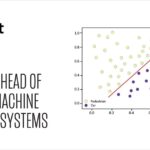Mechatronics programs at community colleges attract and educate a broad mix of students. Credit: Sierra College
The high-tech industry, particularly the robotics sector, faces a pressing labor issue. And this labor issue isn’t one that will be displaced by automation in the future. I am talking about the skilled labor force that assembles, tests, installs, and maintains the robots and automated machinery.
In Part 3 of our STEM education series, we look at the current skills gap for automation technicians and what one regional community college is doing to bridge that gap and prepare a new generation to fill these challenging and well-paying jobs.
You can also check out Part 1, which highlights early STEM education programs, and Part 2, which focuses on women in robotics.
Community colleges a key resource for workforce development
I had the opportunity recently to visit Sierra College in Rocklin, Calif., a suburb of Sacramento. I met with mechatronics Professor Rob Ingram, Dean Amy Schultz, and college President Willy Duncun for a tour of the Rocklin campus mechatronics and electronics labs, along with the well-equipped campus maker space.
What I observed at the campus shattered all of my expectations about the role of secondary education and especially regional community colleges across the country.

Community colleges are setting up maker spaces to support project development for all students. Credit: Sierra College
The truth is that a four-year university or even an advanced degree isn’t for everyone. The high-tech industry needs more skilled technicians than engineers to support the exponential growth promised by the robotics ecosystem.
In addition, as automation displaces manual workers and promises opportunities for higher-skilled, better-paying jobs operating and repairing the machines, the question is: Who is educating and preparing this workforce?

Mechatronics students learn how to set up and troubleshoot closed-loop control circuits. Credit: Sierra College
One answer is in the existing network of local community colleges. The best community colleges are effective at pivoting their programs to meet the needs of an evolving workforce. They’re retooling curricula as needed to keep content fresh and are even cutting programs and courses that are no longer needed, while investing in and standing up new programs to educate and train the adult workforce. These Career Technical Education (CTE) pathways provide an affordable avenue to both young adults and midlife career changers.
For example, at Sierra College, the dean and leadership team dismantled the automotive technician program when they realized that they were overtraining the students. Based on feedback from local automotive dealerships, the CTE was reduced to just two classes, which include just the basics of maintenance and repair. Enough to get the students accepted into a specific manufacturer’s technician program.
Local high-tech employers support the program
In the robotics and automation opportunity, regional manufacturers like Bosch have donated thousands of dollars to the school to build out a new curriculum focused on high-voltage electronics, troubleshooting, and circuit design. Within the program, students learn about closed-loop control, combining both basic electronics and mechanical theory with strong hands-on lab experience. The students start with PLC ladder logic and progress as far as they desire with higher-level robot languages.
“More important than the equipment itself are the relationships that have shaped our program since its inception in the early 2000s,” stated Prof. Ingram. “From the very beginning, companies like NEC Electronics Roseville — now Bosch Semiconductor — Harris & Bruno, and Sierra Pacific Industries invested time into shaping our curriculum through active participation on our advisory committee.”
The school has acquired a set of used ABB IRB 1660ID industrial robots and is integrating robot programming into the curriculum. Prof. Ingram is also actively recruiting manufacturers to donate autonomous mobile robots (AMRs) to extend the curriculum and provide experience in deploying and maintaining these types of robots.
The skills that students learn in the Sierra College mechatronics CTE apply to any employer with programmable systems, like troubleshooting and maintaining a carwash, a power plant, a manufacturing production line, or a regional warehouse.
Dual enrollment reaches into the high schools
This fall, Sierra College is rolling out its basic mechatronics curriculum to several local high schools. The curriculum developed by the college is being delivered to high school students at their respective campuses using the same materials as the college students.
This program achieves two goals:
- Exposing the students to real hands-on experiences with robotics and programming machines
- Giving them college credit for the coursework and providing a jumpstart to the college program after high school

The high school dual enrollment program equips high school classrooms with the same lab equipment and follows the same curriculum as the community college program. Credit: Sierra College
Another advantage of dual enrollment is that it exposes students to the expectations of a college course. Prof. Ingram told The Robot Report that a key requirement of certifying the high school teachers to deliver the coursework and curriculum was that the teachers and schools had to agree to fail students who didn’t meet testing standards. As is often the case, high school teachers are hesitant to fail students for fear of permanent impacts, but colleges take a different approach to the quality of education and expectations.
As we look to the future and the needs of an evolving workforce, in the advent of new technologies like robotics and AI, K-12 education and secondary education must evolve to meet the needs of a changing economy and workforce. Community colleges like Sierra College understand their role and are making the changes necessary to meet this need.




























